-
 Korea.net's 24-hour YouTube channel
Korea.net's 24-hour YouTube channel- NEWS FOCUS
- ABOUT KOREA
- EVENTS
- RESOURCES
- GOVERNMENT
- ABOUT US
View this article in another language
- 한국어
- English
- 日本語
- 中文
- العربية
- Español
- Français
- Deutsch
- Pусский
- Tiếng Việt
- Indonesian
*This is the tenth part in our series, “Gat, traditional headgear in Korea.”
The designation and transmission of tanggeon
A tanggeon is a kind of official headgear put under a gat, known as a tanggeun on Jeju Island. It served to cover the topknot that every man wore, and also helped to support the gat. As with the chongmoja and the manggeon, it was made out of horsehair.
A tanggeon is made by knitting horsehair onto a wooden tenggeon frame placed on the cylindrical workbench, cushioned with a piece of used, soft felt. Unlike the typical order when weaving the crown of a gat, when the artisan starts at the top and moves toward the bottom, the tanggeon is adversely knitted, from the bottom to the top. After completing the weaving process, several threads of horsehair are bound together and cut at each warp, to hem the edge. Before the finishing process, the tanggeon is boiled to help it keep its shape.
After being boiled, the hat is dried and dyed with black ink. Since the process of making a slightly different style of black horsehair hat, tanggeon artisans also make those types of hats.
Jeongju and Anju in Pyeongan Province, Nonsan and Gimje in the Honam region and Jeju Island have long been known as tanggeon-making areas. Among them, the hats made on Jeju Island are even further subdivided into several types: a single folded one, a double folded one, a delicate cross-patterned one with a square design. This last is created using a double, triple or quintuple knitting technique. It can be interpreted that the tanggeon, though normally worn underneath a gat, served in its own right as a hat, thus being given a few more decorative features. At the end of the Joseon era (1395-1910), tens of thousands of tanggeons were produced each year on Jeju Island alone. After the ordinance prohibiting topknots in 1895, however, demand for the traditional hat declined. In the end, today its production only continues on Jeju Island.
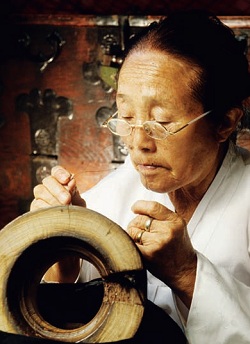 Lee Su-yeo
Lee Su-yeo
Born in 1923
Date of designation: February 24, 1985
Awards: In 1986 she received the 11th Korean Annual Traditional Handicrafts & Art Exhibition award.
In 1980 she won a participation prize at the 5th Korean Annual Traditional Handicrafts & Art Exhibition.
Activities: In 1987 she presented works at exhibitions on traditional crafts that are also important intangible cultural heritage items.
Lee Su-yeo was born and lives in Samyang-dong, on Jeju Island. She began producing hats and hat material when she was thirteen years old. It was easy for her to take up the career of making headgear because she was born into a family of hat-weavers. When premiere skill holder Lim Deok-su passed away in 1985, Lee Su-yeo was designated as an official skill holder. Two years later, in 1987 she was designated a holder of an important intangible cultural heritage item.
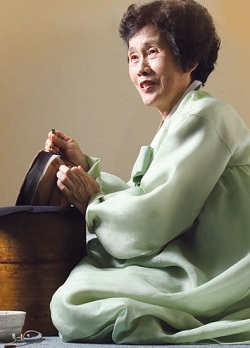 Manggeon-jang
Manggeon-jang
Kang Jeon-hyang
Born in 1943
Date of designation: September 25, 2009
Awards: In 2004, 2005 and 2007, she won awards at the Korean Annual Traditional Handicrafts & Art Exhibition.
Activities: In 2008, she presented works at the Bucheon International Intangible Cultural Heritage Expo, and in 2010 she presented works at the Insa-dong Joint Exhibitions.
Kang Jeon-hyang was born on Jeju Island in 1943. She began learning hat-work from her mother, Lee Su-yeo. She was designated as a skill holder of an important intangible cultural heritage item in 2009, when her mother became an honorary skill holder. She is currently transmitting the handicraft to the next generation and actively participates in public events as well as exhibitions.
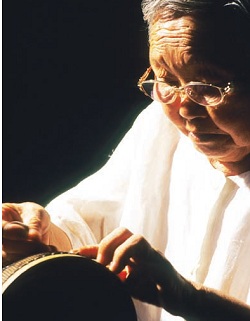
Tanggeon-jang
Kim Gong-chun
Born in 1919
Date of designation: November 17, 1980
Awards: In 1982 she was awarded an appreciation plaque at the Korean Annual Traditional Handicraft & Arts Exhibition in celebration of the 100-year diplomatic relationship between Korea and the U.S. In 1980 she was awarded a prize in the 5th annual Traditional Handicraft & Arts Exhibition.
Activities: In 1980 she presented works at exhibitions for traditional crafts of for important intangible cultural heritage items.
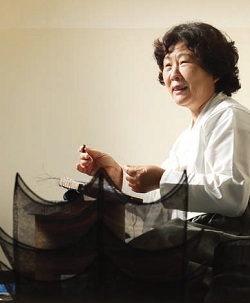 Kim Hye-jeong
Kim Hye-jeong
Born in 1946
Date of designation: September 25, 2009
Awards: In 1987 she was certified as an apprentice for the transmission of a handicraft skill. In 2009 she presented two works at the Tamra Cultural Festival.
Activities: In 2009, she presented works at the Bucheon International Intangible Cultural Heritage Expo. In 2010, she gave lectures at the Training Center for Intangible Cultural Heritage items and at the Jeju Traditional School.
Young women on Jeju Island usually started to learn the art of hat-making at the age of ten. Thus, the daughter of honorary skill holder Kim Gong-chun, Kim Hye-jeong, began to learn hat-making from her mother at that age. Kim Hye-jeong was designated as a skill holder of an Important Intangible Cultural Heritage Item in 2009 when her mother, Kim Gong-chun, became an honorary skill holder.
Proposal for the development of gat-making
Horsehair crafts are well-developed all over Jeju Island. Each region has its own specialty. Manggeon and yangtae are made in Samyang-dong. Tanggeon are made in Whabuk-dong and chongmoja are made in Dodu-ri.
Kim Gong-chun (b. 1919) is a female tanggeon-jang representing Whabuk-dong in Jeju City. She is the only skill holder remaining who has the skills to weave a single folded, double folded and square-patterned tanggeon, as well as the jeongjagwan. She was designated as a skill holder of Intangible Cultural Heritage Item No. 67 in 1980. Currently, her daughter, Kim Hye-jeong, residing in Samyang 2-dong in Jeju City, has succeeded her mother as a skill holder.
The gat possesses exceptional beauty and production methods so unique that they are difficult to find anywhere else in the world. The skills of this traditional craft have been handed down through cooperation between chongmoja-jang, yangtae-jang and ipja-jang. Gannil- or gat-making was designated as Intangible Cultural Heritage Item No. 4 in 1964, the first in the craft category. This demonstrated that the traditional hat enjoyed a high degree of public awareness and was considered an endangered cultural element that needed to be preserved intact. However, in the 1960s and 1970s, only a few skill holders were alive in Tongyeong and on Jeju Island. It was realistically difficult for them to concentrate on making gat because they had to make their own living.
In order to address this difficult situation, the Korean government devised a support system that designated skill holders of gat-making skills in order to provide them with living assistance, thus helping them to maintain tradition. However, as the first generation of skill holders from Tongyeong passed away in the 1970s, and their daughters or disciples who inherited the skills are recognized as new skill holders, a new means for the transmission of gat-making skills is being sought.
Craft skills have traditionally been passed down via the apprentice system, primarily from father to son and mother to daughter within a family, or from artisan to apprentice. This traditional training method heavily depends on direct one-on-one teaching, which is painstaking and time-consuming. Furthermore, skill holders of Important Intangible Cultural Heritage Items are working and teaching under poor conditions. Their private home, normally a living space, turns into a workshop with tools and materials displayed when making a gat or when providing a training class. Except for the time to make one or two pieces of the crown or brim of the gat for compulsory submission to the annual event at the Korea Annual Traditional Handicraft & Arts Exhibition, skill holders rarely put any time or effort into gat production because they have to do odd jobs to make a living or other work unrelated to the traditional craft.
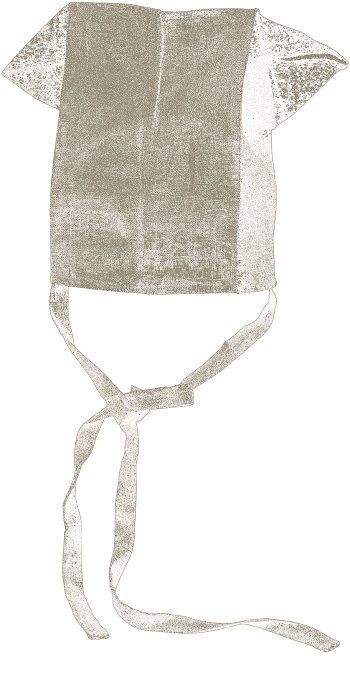 Improving their working and living conditions is believed to be the only way to ensure the development of Korea's traditional crafts. Therefore, there are several suggestions to be made.
Improving their working and living conditions is believed to be the only way to ensure the development of Korea's traditional crafts. Therefore, there are several suggestions to be made.
First, it is urgent to set up a suitable workshop in which a master can concentrate on transmission and education and make a work of art. It is difficult to lay out dozens of tools in such a small space as a person's home. In addition, the place is used as both a private home and a workshop, so that it is impossible to provide a proper education there.
Second, in order to procure quality materials in a smooth manner, needed to make a high-quality gat, it is essential to build a network with producers of the main materials. Various materials are necessary to make a gat, including horsehair, bamboo, silk cloth, silk thread and charcoal. It is extremely impractical for the gat artisans to personally visit Jeju Island, Damyang and Sangju to get these materials.
Third, another precondition of gat-making is to be equipped with the fine quality traditional tools and devices needed. For example, the iron necessary to gently curve the bamboo brim can be purchased only through a special order at a traditional forge. The goldingi or a beorangil, two traditional tools, can only be made-to-order by a carpenter who is capable of making the tool.
Fourth, traditional craft skills need to be modified to meet the needs of modern society, thus developing as an industry. Integration between traditional art and modern ideas and state-of-the-art technology -- in other words, the encounter between the skills of traditional crafts and modern, creative imaginations -- can lead to the birth of new craft and design visions that can be applied to modern times. To this end, artists who major in modern arts and crafts will inherit traditional skills from local artisans. Based on their learnings, they will seek an opportunity for the traditional culture industry to open a new future via education focusing on the planning and producing of new craft products.
Although people consider it important to designate skill holders and provide transmission education in order to revitalize traditional craft arts and to preserve traditional techniques, they believe that a decline in the number of traditional craftsmen is a natural phenomenon. Even if the importance of tradition is emphasized in the modern industrial society, reality is harsh for craftsmen of traditional crafts, who bear all the burden and responsibility for transmitting their traditions. The government is expected to devise more aggressive and constructive alternatives to draw the attention of the younger generation of craftsmen to the traditional crafts. Every master in the craft category shows strong commitment to hand down their skills through education and training.
To this end, several prerequisites should be addressed. First, secure space for transmission and education, prepare a proper supply of materials and tools, allowing the artisans to work, and, finally, constantly offer financial support to the students who are inheriting the skills. Multilateral efforts should be made to provide a proper place for workshops and education, to procure a constant supply of materials and tools, and to plan and produce new products through the integration with modern crafts. Such a move would help traditional crafts be handed down to future generations.
*This series of article has been made possible through the cooperation of the National Research Institute of Cultural Heritage. (Source: Intangible Cultural Heritage of Korea)
The designation and transmission of tanggeon
A tanggeon is a kind of official headgear put under a gat, known as a tanggeun on Jeju Island. It served to cover the topknot that every man wore, and also helped to support the gat. As with the chongmoja and the manggeon, it was made out of horsehair.
A tanggeon is made by knitting horsehair onto a wooden tenggeon frame placed on the cylindrical workbench, cushioned with a piece of used, soft felt. Unlike the typical order when weaving the crown of a gat, when the artisan starts at the top and moves toward the bottom, the tanggeon is adversely knitted, from the bottom to the top. After completing the weaving process, several threads of horsehair are bound together and cut at each warp, to hem the edge. Before the finishing process, the tanggeon is boiled to help it keep its shape.
After being boiled, the hat is dried and dyed with black ink. Since the process of making a slightly different style of black horsehair hat, tanggeon artisans also make those types of hats.
Jeongju and Anju in Pyeongan Province, Nonsan and Gimje in the Honam region and Jeju Island have long been known as tanggeon-making areas. Among them, the hats made on Jeju Island are even further subdivided into several types: a single folded one, a double folded one, a delicate cross-patterned one with a square design. This last is created using a double, triple or quintuple knitting technique. It can be interpreted that the tanggeon, though normally worn underneath a gat, served in its own right as a hat, thus being given a few more decorative features. At the end of the Joseon era (1395-1910), tens of thousands of tanggeons were produced each year on Jeju Island alone. After the ordinance prohibiting topknots in 1895, however, demand for the traditional hat declined. In the end, today its production only continues on Jeju Island.

Born in 1923
Date of designation: February 24, 1985
Awards: In 1986 she received the 11th Korean Annual Traditional Handicrafts & Art Exhibition award.
In 1980 she won a participation prize at the 5th Korean Annual Traditional Handicrafts & Art Exhibition.
Activities: In 1987 she presented works at exhibitions on traditional crafts that are also important intangible cultural heritage items.
Lee Su-yeo was born and lives in Samyang-dong, on Jeju Island. She began producing hats and hat material when she was thirteen years old. It was easy for her to take up the career of making headgear because she was born into a family of hat-weavers. When premiere skill holder Lim Deok-su passed away in 1985, Lee Su-yeo was designated as an official skill holder. Two years later, in 1987 she was designated a holder of an important intangible cultural heritage item.

Kang Jeon-hyang
Born in 1943
Date of designation: September 25, 2009
Awards: In 2004, 2005 and 2007, she won awards at the Korean Annual Traditional Handicrafts & Art Exhibition.
Activities: In 2008, she presented works at the Bucheon International Intangible Cultural Heritage Expo, and in 2010 she presented works at the Insa-dong Joint Exhibitions.
Kang Jeon-hyang was born on Jeju Island in 1943. She began learning hat-work from her mother, Lee Su-yeo. She was designated as a skill holder of an important intangible cultural heritage item in 2009, when her mother became an honorary skill holder. She is currently transmitting the handicraft to the next generation and actively participates in public events as well as exhibitions.

Tanggeon-jang
Kim Gong-chun
Born in 1919
Date of designation: November 17, 1980
Awards: In 1982 she was awarded an appreciation plaque at the Korean Annual Traditional Handicraft & Arts Exhibition in celebration of the 100-year diplomatic relationship between Korea and the U.S. In 1980 she was awarded a prize in the 5th annual Traditional Handicraft & Arts Exhibition.
Activities: In 1980 she presented works at exhibitions for traditional crafts of for important intangible cultural heritage items.

Born in 1946
Date of designation: September 25, 2009
Awards: In 1987 she was certified as an apprentice for the transmission of a handicraft skill. In 2009 she presented two works at the Tamra Cultural Festival.
Activities: In 2009, she presented works at the Bucheon International Intangible Cultural Heritage Expo. In 2010, she gave lectures at the Training Center for Intangible Cultural Heritage items and at the Jeju Traditional School.
Young women on Jeju Island usually started to learn the art of hat-making at the age of ten. Thus, the daughter of honorary skill holder Kim Gong-chun, Kim Hye-jeong, began to learn hat-making from her mother at that age. Kim Hye-jeong was designated as a skill holder of an Important Intangible Cultural Heritage Item in 2009 when her mother, Kim Gong-chun, became an honorary skill holder.
Proposal for the development of gat-making
Horsehair crafts are well-developed all over Jeju Island. Each region has its own specialty. Manggeon and yangtae are made in Samyang-dong. Tanggeon are made in Whabuk-dong and chongmoja are made in Dodu-ri.
Kim Gong-chun (b. 1919) is a female tanggeon-jang representing Whabuk-dong in Jeju City. She is the only skill holder remaining who has the skills to weave a single folded, double folded and square-patterned tanggeon, as well as the jeongjagwan. She was designated as a skill holder of Intangible Cultural Heritage Item No. 67 in 1980. Currently, her daughter, Kim Hye-jeong, residing in Samyang 2-dong in Jeju City, has succeeded her mother as a skill holder.
The gat possesses exceptional beauty and production methods so unique that they are difficult to find anywhere else in the world. The skills of this traditional craft have been handed down through cooperation between chongmoja-jang, yangtae-jang and ipja-jang. Gannil- or gat-making was designated as Intangible Cultural Heritage Item No. 4 in 1964, the first in the craft category. This demonstrated that the traditional hat enjoyed a high degree of public awareness and was considered an endangered cultural element that needed to be preserved intact. However, in the 1960s and 1970s, only a few skill holders were alive in Tongyeong and on Jeju Island. It was realistically difficult for them to concentrate on making gat because they had to make their own living.
In order to address this difficult situation, the Korean government devised a support system that designated skill holders of gat-making skills in order to provide them with living assistance, thus helping them to maintain tradition. However, as the first generation of skill holders from Tongyeong passed away in the 1970s, and their daughters or disciples who inherited the skills are recognized as new skill holders, a new means for the transmission of gat-making skills is being sought.
Craft skills have traditionally been passed down via the apprentice system, primarily from father to son and mother to daughter within a family, or from artisan to apprentice. This traditional training method heavily depends on direct one-on-one teaching, which is painstaking and time-consuming. Furthermore, skill holders of Important Intangible Cultural Heritage Items are working and teaching under poor conditions. Their private home, normally a living space, turns into a workshop with tools and materials displayed when making a gat or when providing a training class. Except for the time to make one or two pieces of the crown or brim of the gat for compulsory submission to the annual event at the Korea Annual Traditional Handicraft & Arts Exhibition, skill holders rarely put any time or effort into gat production because they have to do odd jobs to make a living or other work unrelated to the traditional craft.

First, it is urgent to set up a suitable workshop in which a master can concentrate on transmission and education and make a work of art. It is difficult to lay out dozens of tools in such a small space as a person's home. In addition, the place is used as both a private home and a workshop, so that it is impossible to provide a proper education there.
Second, in order to procure quality materials in a smooth manner, needed to make a high-quality gat, it is essential to build a network with producers of the main materials. Various materials are necessary to make a gat, including horsehair, bamboo, silk cloth, silk thread and charcoal. It is extremely impractical for the gat artisans to personally visit Jeju Island, Damyang and Sangju to get these materials.
Third, another precondition of gat-making is to be equipped with the fine quality traditional tools and devices needed. For example, the iron necessary to gently curve the bamboo brim can be purchased only through a special order at a traditional forge. The goldingi or a beorangil, two traditional tools, can only be made-to-order by a carpenter who is capable of making the tool.
Fourth, traditional craft skills need to be modified to meet the needs of modern society, thus developing as an industry. Integration between traditional art and modern ideas and state-of-the-art technology -- in other words, the encounter between the skills of traditional crafts and modern, creative imaginations -- can lead to the birth of new craft and design visions that can be applied to modern times. To this end, artists who major in modern arts and crafts will inherit traditional skills from local artisans. Based on their learnings, they will seek an opportunity for the traditional culture industry to open a new future via education focusing on the planning and producing of new craft products.
Although people consider it important to designate skill holders and provide transmission education in order to revitalize traditional craft arts and to preserve traditional techniques, they believe that a decline in the number of traditional craftsmen is a natural phenomenon. Even if the importance of tradition is emphasized in the modern industrial society, reality is harsh for craftsmen of traditional crafts, who bear all the burden and responsibility for transmitting their traditions. The government is expected to devise more aggressive and constructive alternatives to draw the attention of the younger generation of craftsmen to the traditional crafts. Every master in the craft category shows strong commitment to hand down their skills through education and training.
To this end, several prerequisites should be addressed. First, secure space for transmission and education, prepare a proper supply of materials and tools, allowing the artisans to work, and, finally, constantly offer financial support to the students who are inheriting the skills. Multilateral efforts should be made to provide a proper place for workshops and education, to procure a constant supply of materials and tools, and to plan and produce new products through the integration with modern crafts. Such a move would help traditional crafts be handed down to future generations.
*This series of article has been made possible through the cooperation of the National Research Institute of Cultural Heritage. (Source: Intangible Cultural Heritage of Korea)
Related Contents
Most popular
- China warmly welcomes first Korea-born giant panda Fu Bao
- First hearing-impaired K-pop act hopes for 'barrier-free world'
- Novelist Hwang's 'Mater 2-10' shortlisted for Int'l Booker Prize
- Expats could account for 7% of population in 20 years: report
- Nat'l Fire Agency picks 137 elite staff for deployment abroad









![Gat, traditional headgear in Korea [9]](/upload/content/image/1396331775823.jpg)
![Gat, traditional headgear in Korea [8]](/upload/content/image/1395720334038.jpg)
![Gat, traditional headgear in Korea [7]](/upload/content/image/1395108155289.jpg)
![Gat, traditional headgear in Korea [6]](/upload/content/image/1393924045608.jpg)
![Gat, traditional headgear in Korea [5]](/upload/content/image/1393319340768.jpg)
![Gat, traditional headgear in Korea [4]](/upload/content/image/1392690825210.jpg)
![Gat, traditional headgear in Korea [3]](/upload/content/image/1392095636707.jpg)
![Gat, traditional headgear in Korea [2]](/upload/content/image/1391590339998.jpg)





